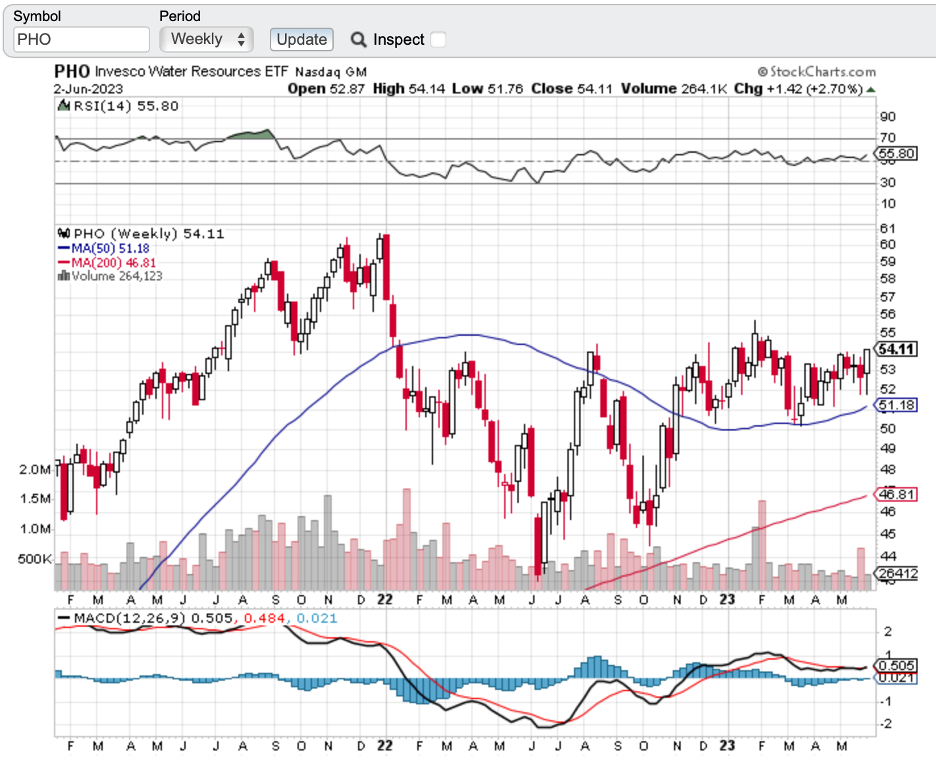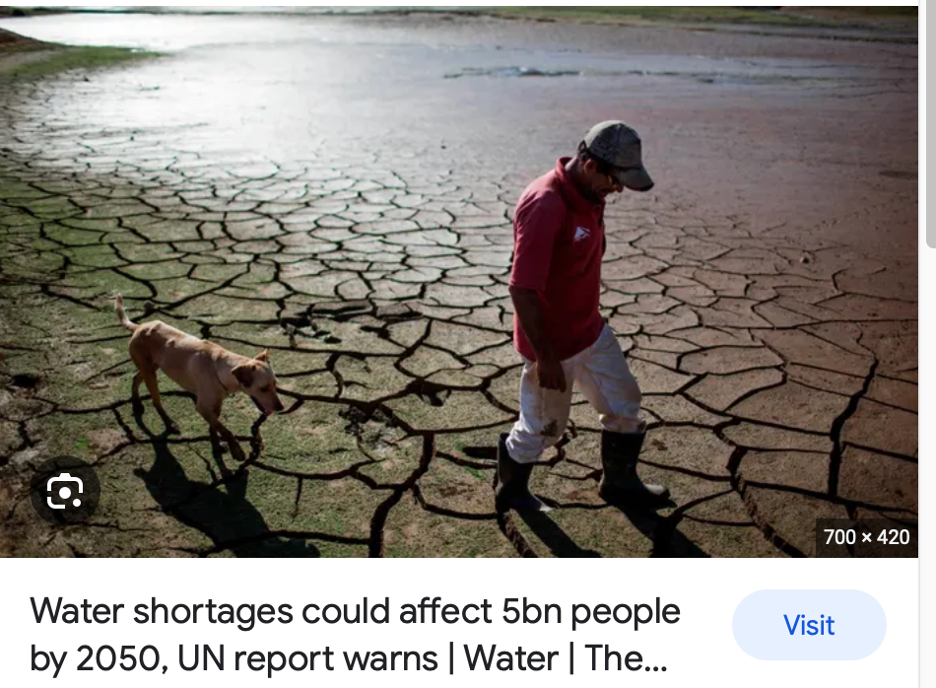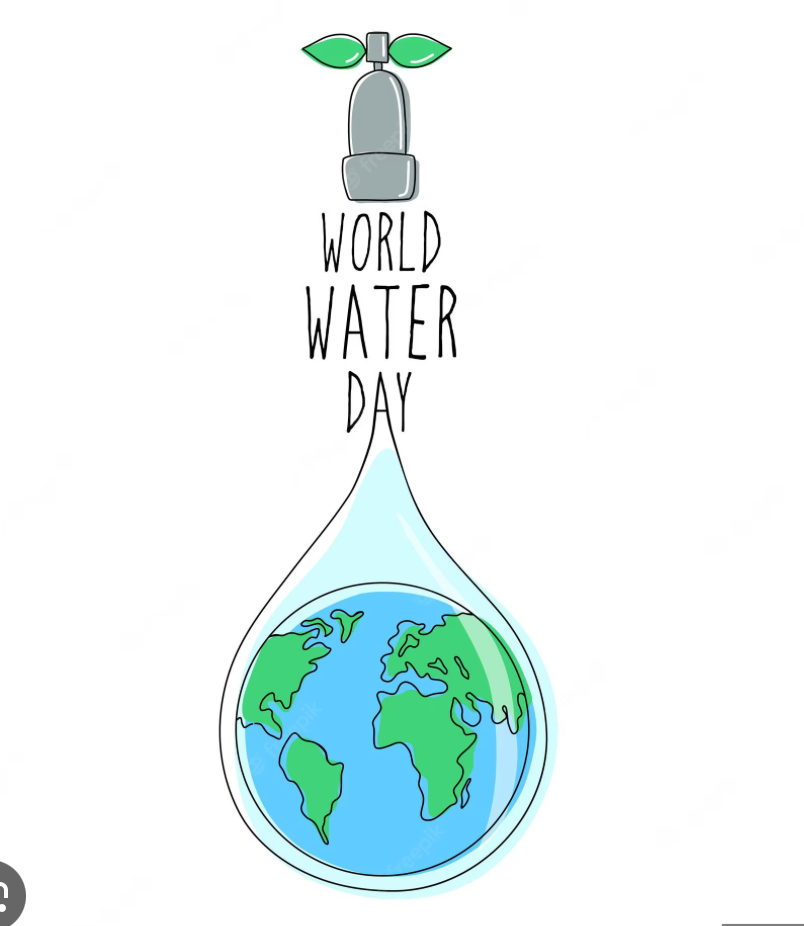June 7, 2023
Hello everybody.
We all know how important water is. To begin with, we as human beings, consist of 55-60% water. We are always told to drink more water to maintain better health.
What we might not fully realize is the significance of water, not only for ourselves, but also for our ecosystem, our economy, and our planet.
We can benefit physically and financially by investing in it.
But how do we invest in water?
Water is already traded on the financial markets, but does it make sense for you to invest in this resource?
Let’s see…
Water is a commodity, like gold, oil, wheat, or sugar.
So, it can be traded and like other commodities, the price can fluctuate depending on supply and demand. Research shows that the supply of water could begin to decrease in the next decade, which means demand will increase exponentially.
And what will that mean?
You guessed it.
The price of water goes up.
And the water crisis keeps getting worse.
So, what can you do?
You can invest in companies that deal with recycling water and water efficiency.
One managed fund is the Pictet Clean Water Fund – where you can profit from water as an investment opportunity.
OK, we all know how supply and demand works, - Economics 101.
For example, if there is a drought and there is a low wheat harvest due to drought or extreme weather events, the supply goes down. In the economy, in general, there will be more demand, than supply which makes the price go up. As water is a commodity, we can see the same thing. There are supply and demand issues here as well.
Let’s ask a critical question?
How much water do we have on Earth?
And can we meet the demand without major problems?
We must wrap our heads around the fact that only 3% of the water on the planet is freshwater – which humans can consume. The rest of it, 97% is too salty to drink or to use for agriculture.
Glaciers hold around 2.5% of freshwater, which is inaccessible to humans.
So, when you think about it, there is not that much water available.
And, like it or not, climate change, is threatening our supply.
How?
Extreme weather events – which are increasing – are threatening the availability of cleanliness of water.
Rising sea levels impact the supply of fresh water. As ocean levels rise, freshwater becomes salty water.
The impact…
Water prices will rise in the future as less supply = higher prices.
As the world population grows to almost 10 billion in 2050 and the increased wealth of that population demands far more luxury foods, such as meat, the value of water will be highlighted.
Consider that it takes 15,415 litres/1 kg = a single T-bone steak.
So, you are looking at two Olympic swimming pools to produce the meat from just one cow.
Or think about your cup of coffee. For 1kg of coffee beans, you need 18,900 litres of water.
As more and more people become part of the middle class in countries such as China and India, you can begin to imagine the demands on water, as a resource.
Agriculture and food take up 69% of the world’s water resources now.
Scarcity will make water more valuable.
England has announced that by 2050 domestic demand could exceed supply by up to 3.1 billion litres/day.
NASA has discovered that 21 out of 37 of the world’s aquifers are currently being depleted.
Other freshwater sources are being polluted.
The Chinese government admits that 80% of the country’s surface groundwater is not fit for drinking, while 90% of groundwater in urban areas is contaminated and 40% of its rivers are too polluted to use for either agricultural or industrial use.
By 2025, it’s estimated that 66% of the world will live in water-stressed areas according to the World Resources Institute.
A 40% gap between supply and demand will emerge over the next 15 years.
Water has always been important. Even Dwight Eisenhower remarked that “among these treasures of our land is water, fast becoming our most valuable, most prized, most critical resource.”
Opportunities and Solutions
Exploration - helps uncover new aquifers and sources of water.
Efficient wastewater management.
The Middle East is choosing new purification technologies, such as graphene desalination, a process that turns deserts into irrigated farmland.
Aeroponic indoor farming uses 90% less water.
Smart metres to know how much water we are using.
Upgrade existing infrastructure networks – ease water loss and improve delivery.
Invest in water-rich farmland (which is Michael Burry’s (of “The Big Short”) way of investing in water. He says that it became “clear to me that food is the way to invest in water. That is, grow food in water-rich areas and transport it for sale in water-poor areas.”
Research by Trucost suggests that more than half of the profits of the world’s biggest companies would be at risk if water was priced to reflect its true value.
Microsoft is one company that is aware of this issue. It is experimenting with putting its data centres beneath the ocean (to cool naturally).
The WHO has estimated that the economic returns of every $1.00 invested in water and sanitation is $4.50.
Individual shares, ETFs, and mutual funds are ways you can invest in this resource.
Have a look at (PHO), Invesco Water Resources ETF. On the weekly chart, it presents an inverted head and shoulders pattern, which should soon break to the upside.
Both John Thomas and I are expecting the commodities sector to be strong in the second half of the year and into next year.

Top 9 Holdings of (PHO)
Name:
American Water Works (AWK) 4.25%
A.O Smith Corp (AOS) 4.19%
Pentair PLC (PNR) 4.18%
Evoqua Water Technologies Corp (AQUA) 4.10%
Roper Technologies Inc (ROP) 8.52%
Ecolab Inc (ECL) 8.48%
Xylem Inc (XYL) 8.15%
Waters Corp (WAT) 3.89%
Danaher Corp (DHR) 7.71%
Investing in water is something to be seriously considered, with a long-term view to the future in mind.
Have a great week.
Cheers,
Jacquie


World Water Crisis – the World needs to wake up.

Friday, March 22nd, 2024.

